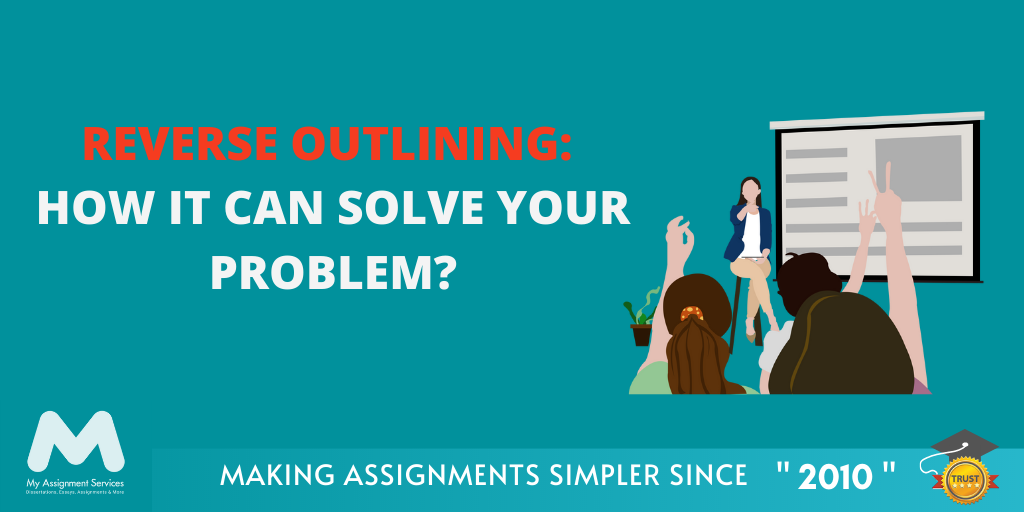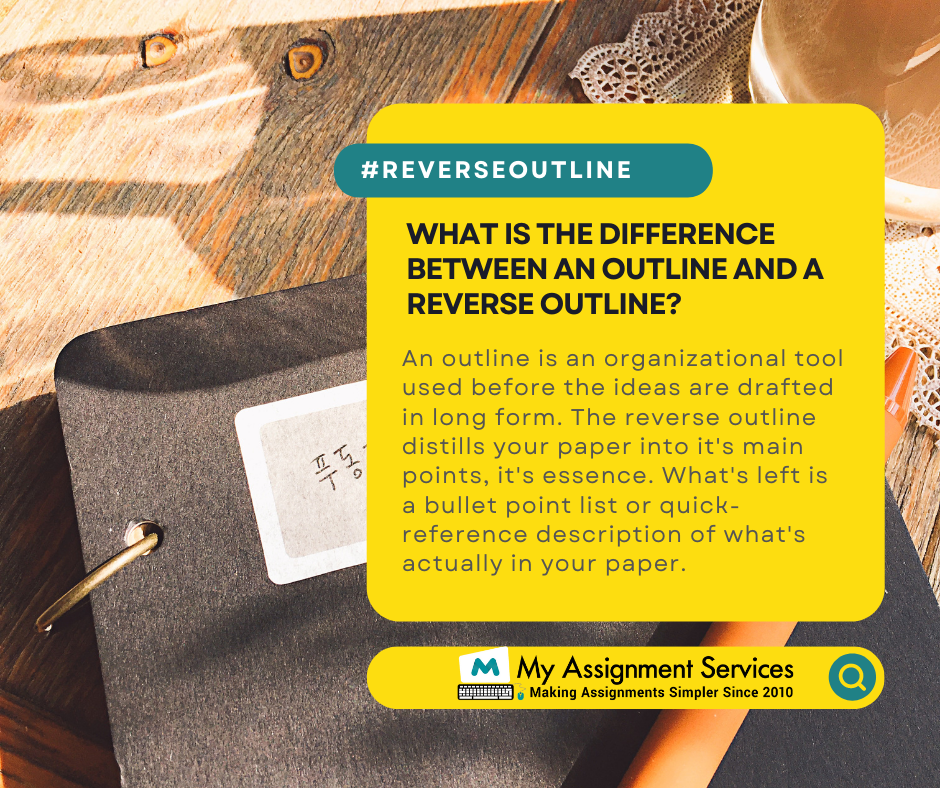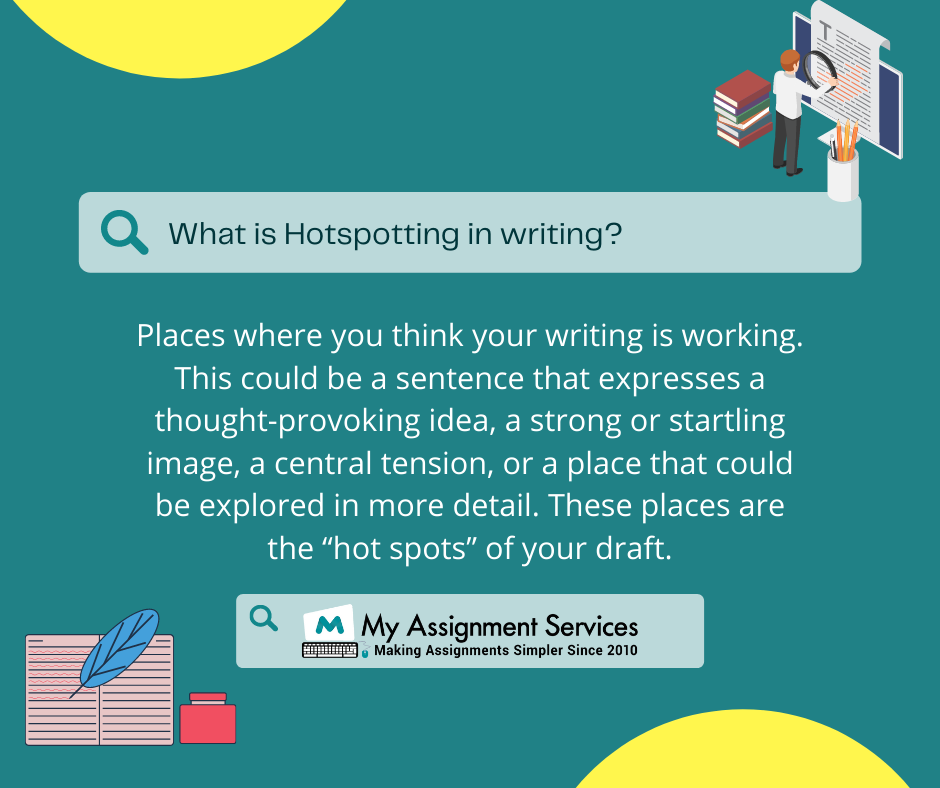
Reverse outlining is a technique that will help you outline and structure your papers. This means that whatever kind of paper you are faced with: essays, thesis, dissertation, research paper; if you know how to do reverse outlining, it can be done much faster and easier. Also, it helps the writer organize the main ideas and their order in such an accurate manner that he or she can easily explain them by using extensive information from the required sources. The process is quite simple as well as effective for different types of writing.
Reverse outlining creates a map for your thoughts about anything you want to write about because all main points must be included in this map first and then linked with each other in a logical order. Reverse Outlining is super easy and helps your ideas flow more easily. We have come up with the only guide you'll ever need to know all about reverse outlining.

First of all, you need to sit down and think about everything that has been bothering you lately. Write down all your ideas and everything related to them. See some reverse outline examples. Jot down as many things as possible and if they do not seem important later on, start eliminating them from the list. After weeding out unimportant topics, you should see how many concepts remain and if any of them is worth writing about. If so, proceed to create the main topic for each of these concepts and try making it as specific as possible by explaining what your argument will be about. For example: “The role of women in present society” can be reduced to such sub-topics as “women's clothing” or glass ceiling.
At this stage, you should have a general idea about what you want to say and your paper's structure. The next step is to find reliable sources that provide useful information that can support your main ideas. After gathering enough data from these references, start placing it into a logical order by grouping all necessary concepts together under certain headings and subheadings within each group. These groups must be related to each other in some way because otherwise, they will not make sense later on when linked with one another in a final argumentative paper or essay. Keep in mind that every single concept presented in the end result must be supported with evidence gathered from reliable resources! Also, do not forget to use different sources like books, internet articles, magazines, etc. They all provide valuable information to do your work as descriptive and comprehensive as possible.
Now, when all headings within each group are placed logically, it is time to make an outline itself. An outline should include key points that give clear meaning to the entire paper and must be supported by every fact from reliable resources gathered earlier. For example: if we take internet articles as sources of information about “women's clothing,” one heading can read: "Clothing industry functions" - a point which will describe how this industry works and what difficulties it faces nowadays. This idea must be supported by other ideas presented below, such as "how do tourists affect the fashion business?" or "how does online shopping affect women's clothing?" etc.
As you can see, the mentors for assignment help in UK also say that this reverse outlining technique requires some logical thinking and self-discipline before you start writing because it helps to structure the main points of your paper in a meaningful way. It also assists with organizing thoughts so that they are presented in a clear and consistent manner, making it much easier to write an original paper using extensive information from reliable resources. If done properly, reverse outlining will provide you with all necessary facts structured in the accurate order needed for creating descriptive papers on any topic of interest!
Reverse Outlining usually has 6 steps:
1.) Brainstorming -Gather ideas about what you want to say in your essay.
2.) Reverse outlining -Choose the best outline for your essay based on your brainstorming session. It would help if you started with the important main points and then went backwards, providing details.
3.) Gathering information -Secondary research sources to fill in the gaps of your draft. This is where it will become clear why each point relates to another one.
4.) Using these sources -Include everything you've gathered from reliable resources (not Wikipedia, etc.). Don't forget to cite anything you use! If not included, readers who check sources may think that whatever is presented isn't true, defeating the purpose of reverse outlining.
5.) Creating an introduction -Write an introduction that is engaging. This should make the reader want to read more about your topic.
6.) Finalising paper -Proofread and edit for errors within grammar, punctuation, etc. Also, make sure you've cited everything used in your essay.
Save time: By reverse outlining, you can see what information is needed to complete your paper, reducing the amount of time spent writing. Reverse Outlining also allows students to organize their thoughts in a comprehensive way before they start writing, which saves them even more time that could be otherwise wasted on revision or editing!

Increase knowledge about the subject being written about by using secondary sources for references, making it easier to write an in-depth essay.
Creates a better relationship with information - instead of copying/pasting it all into one huge block of text, it is broken down into easily manageable chunks with headings and subheadings within each group for organization purposes. This makes it easier for writers to learn about their topic because it is organized logically.
Increases the quality of essays: by providing all necessary facts for writing descriptive papers which are cited from reliable sources. This means that whatever you write about will be original and true! It also prevents writers from using Wikipedia as a source of information which can cause plagiarism issues within academic institutions.
Reverse Outlining does not have any downfalls except for time, but if used properly can save students even more time by saving them from editing or revising their paper. By reverse outlining, writers are able to provide readers with an organized paper filled with accurate facts making it easier to read and understand what they are being presented. Using Reverse Outlining also reduces plagiarism because writers use factual information referenced from reliable sources. No matter the topic, reverse outlining can be used to assist with outlining, brainstorming ideas, summarising information and creating a solid foundation of information for descriptive essays!
Do you need help with your homework? You’re not alone. Many students turn to our online 1:1 services for assistance, and we’re here to provide the best assignment help in UK! Whether you need a little extra guidance or want mentors to take care of the complexities, our team is ready and waiting to help.

Hello! I am Cloe Book, an English literature student and work as a part-time professional writer and a consultant. My skill is to make compelling narrative and critical analysis to help students gain good grades while learning to develop their Essay writing skills.
1,212,718Orders
4.9/5Rating
5,063Experts
Turnitin Report
$10.00Proofreading and Editing
$9.00Per PageConsultation with Expert
$35.00Per HourLive Session 1-on-1
$40.00Per 30 min.Quality Check
$25.00Total
FreeGet
500 Words Free
on your assignment today
Trending now
The Student Corner
Subscribe to get updates, offers and assignment tips right in your inbox.
Popular Posts
Popular Posts
Request Callback
Doing your Assignment with our resources is simple, take Expert assistance to ensure HD Grades. Here you Go....
Lock in your expert now.
Pay the rest only after you're 100% satisfied.
Why this is a no-brainer:
Loved reading this Blog? Share your valuable thoughts in the comment section.
Add comment